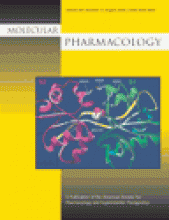Abstract
The role of 5-lipoxygenase (5-LOX) in the pathophysiology of renal ischemia/reperfusion (I/R) injury is not known. Here we investigate the effects of 1) the 5-LOX inhibitor zileuton and 2) 5-LOX gene knockout (5-LOX–/–) mice on renal dysfunction and injury caused by I/R of the kidney in mice. Wild-type mice treated with zileuton (3 mg/kg i.v.) or 5-LOX–/– mice were subjected to bilateral renal artery occlusion (30 min) followed by reperfusion (24 h). Plasma urea, creatinine, and aspartate aminotransferase (AST) were measured as markers of renal dysfunction and reperfusion injury. Kidneys were used for histological evaluation of renal injury. Renal myeloperoxidase activity was measured and used as an indicator of polymorphonuclear leukocyte (PMN) infiltration and renal expression of intercellular adhesion molecule-1 (ICAM-1) was determined using immunohistochemistry. Administration of zileuton before I/R significantly reduced the degree of renal dysfunction (urea, creatinine) and injury (AST, histology). In addition, zileuton reduced the expression of ICAM-1 and the associated PMN infiltration caused by I/R of the mouse kidney. Compared with wild-type mice, the degree of renal dysfunction, injury, and inflammation caused by I/R in 5-LOX–/– mice was also significantly reduced, confirming the pathophysiological role of 5-LOX in the development of renal I/R injury. We propose that 1) endogenous 5-LOX metabolites enhance the degree of renal injury, dysfunction, and inflammation caused by I/R of the kidney by promoting the expression of adhesion molecules, and 2) inhibitors of 5-LOX may be useful in the treatment of conditions associated with I/R of the kidney.
- Received December 12, 2003.
- Accepted April 23, 2004.
- The American Society for Pharmacology and Experimental Therapeutics
MolPharm articles become freely available 12 months after publication, and remain freely available for 5 years.Non-open access articles that fall outside this five year window are available only to institutional subscribers and current ASPET members, or through the article purchase feature at the bottom of the page.
|






